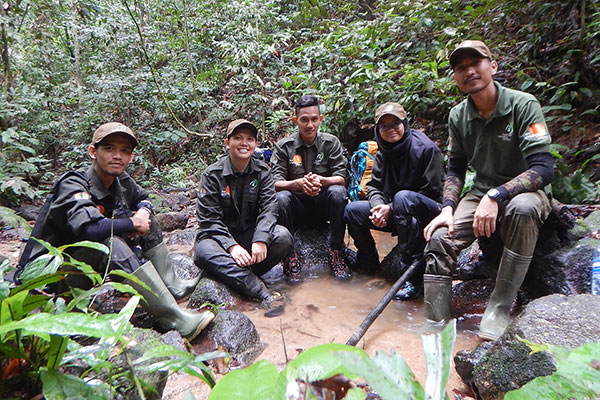Read the second part of our in-depth profile of a wildlife ranger team. Last month we left them racing towards a Sumatran tiger trapped in a snare. What condition will the rangers find her in? Will they be able to save her, or will they be confronted by another distressing tiger death? Read below to find out what happened next… And if you’d like to help these rangers rescue more tigers, your gift today will go straight to the field.
2pm
After being alerted by the Nature Conservation Agency (BKSDA) that a tiger has been seen, we race on foot to the location, across a raging river and up and down muddy hills for two hours without rest. The Sumatran tiger is an adult female, similar in age to the mother tiger who died in April this year. For a moment, we remember the horror of that scene we came across just a few months ago. A mother tiger and her two semi-adult sons had died within metres of each other. The two sons were trapped by their necks and died together. Four of our team head out through the forest to scout for any other snares or trapped tigers nearby.
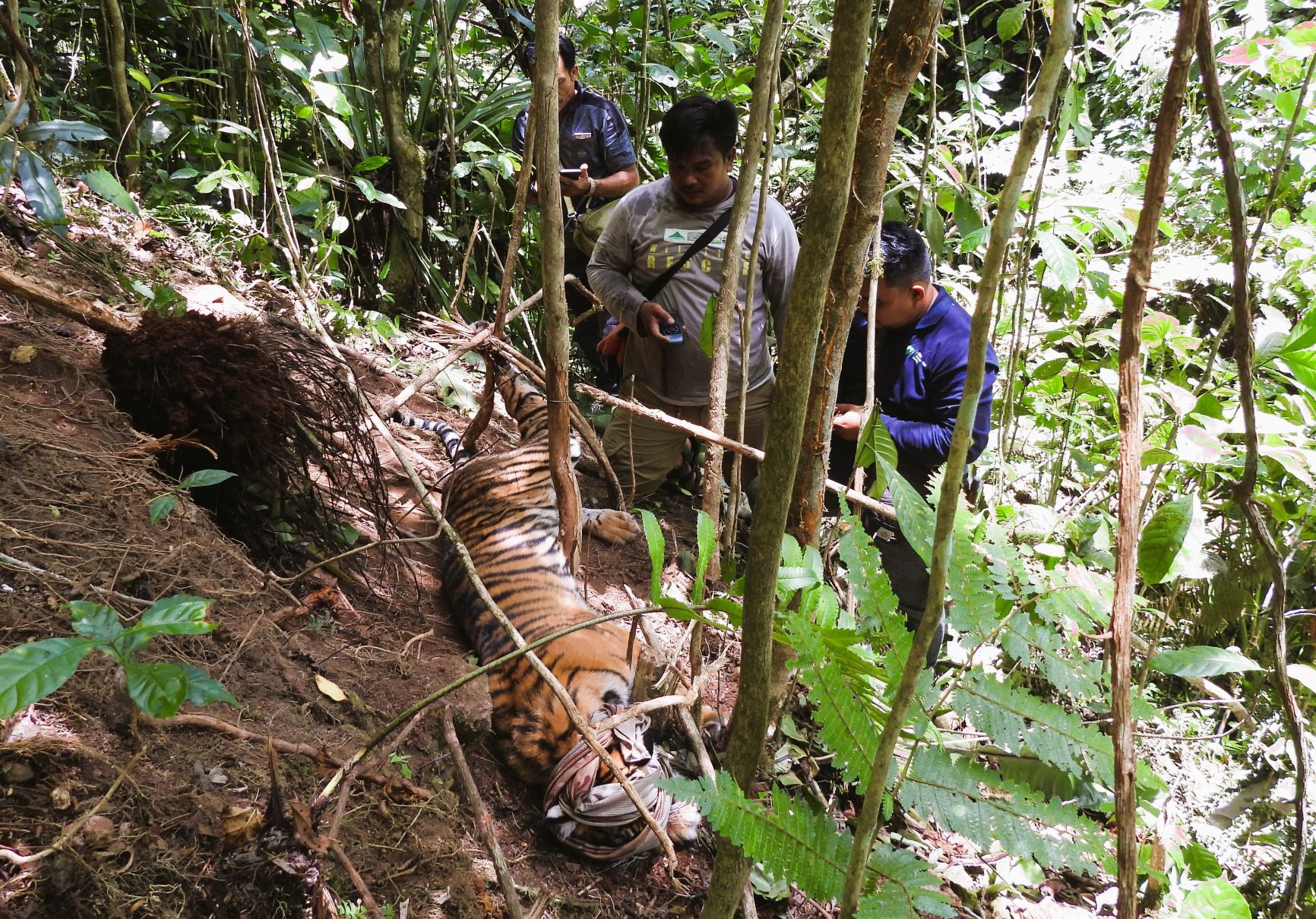
Above: The tiger caught in the snare, with the wire wrapped around her back left leg
Although this tiger, who we decide to name Siti, is still alive, the situation is urgent. If we’re not quick, she may die. Her back left leg is entangled in a cruel wire sling snare and in her panic at trying to get free, the wire has become tighter and tighter around her leg. We aren’t sure how long she’s been lying here, but it’s at least two days. There’s no time to waste.
3pm
Our team leader discusses with the BKSDA, who tell us that the snare has cut through the skin and into the layer of flesh underneath, but we won’t know how bad it is until we remove the snare and the vets check the wound. Along with the BKSDA and their veterinarians, we work together to sedate the tiger so she doesn’t struggle. We place a cloth over her eyes to help her stay calm; any rapid moves could injure her and our team. Our head ranger cuts the snare so it is no longer pulling on her leg. The terrain is too hilly and difficult, so we have to move her to another location to carry out first aid and a medical examination.
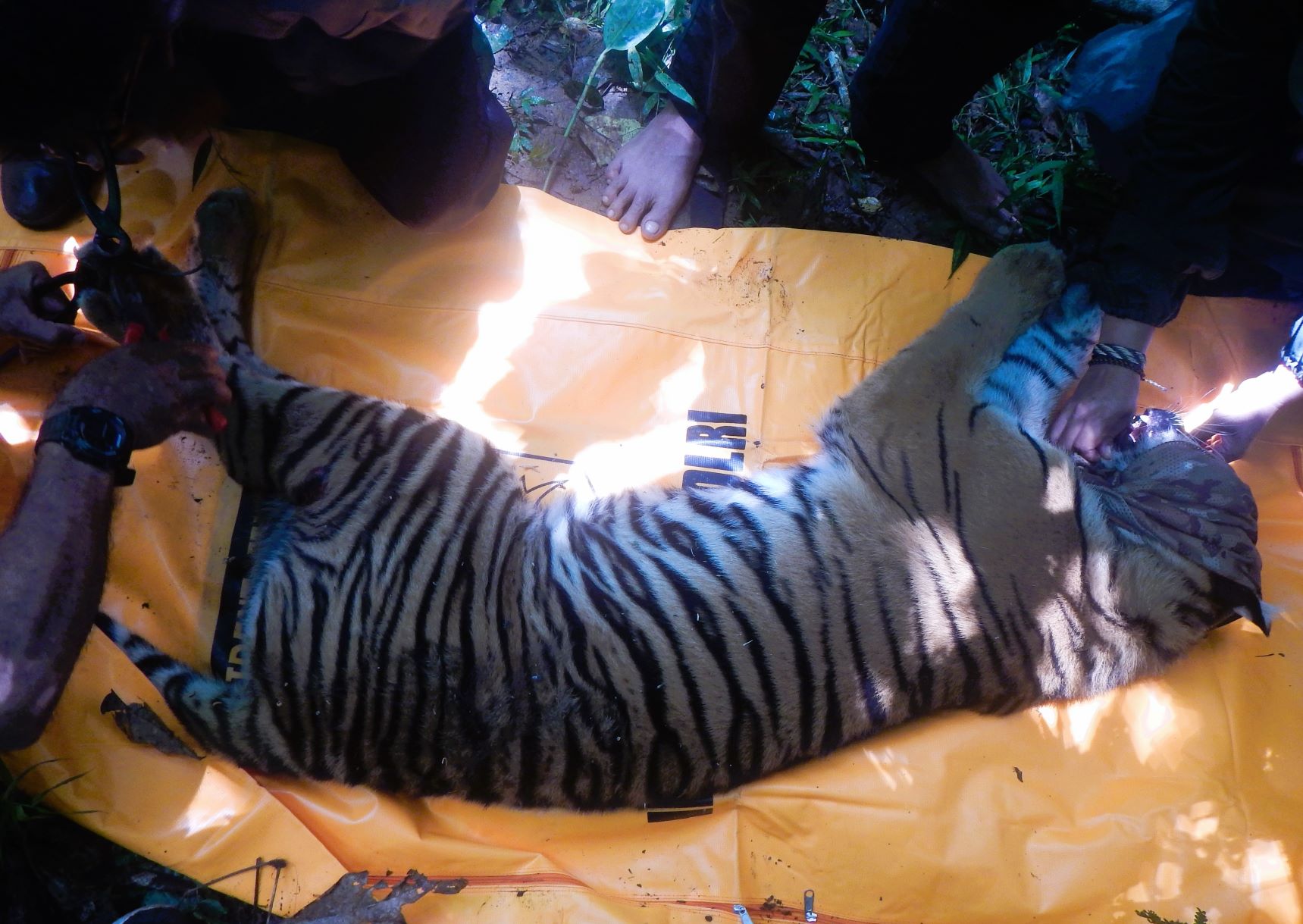
Above: The rescue team cutting through the wire snare
3.30pm
Our rangers return from patrolling the forest all around the site. They’ve removed another five snares, which is a huge haul for this part of the forest. It’s an ongoing battle to educate and remind local communities that they shouldn’t set snares in the forest. We will need to do some more community education in the five villages near this forest edge. But the good news is that no other tigers have been found trapped. We have narrowly avoided another horrific situation like the one that met us in April.
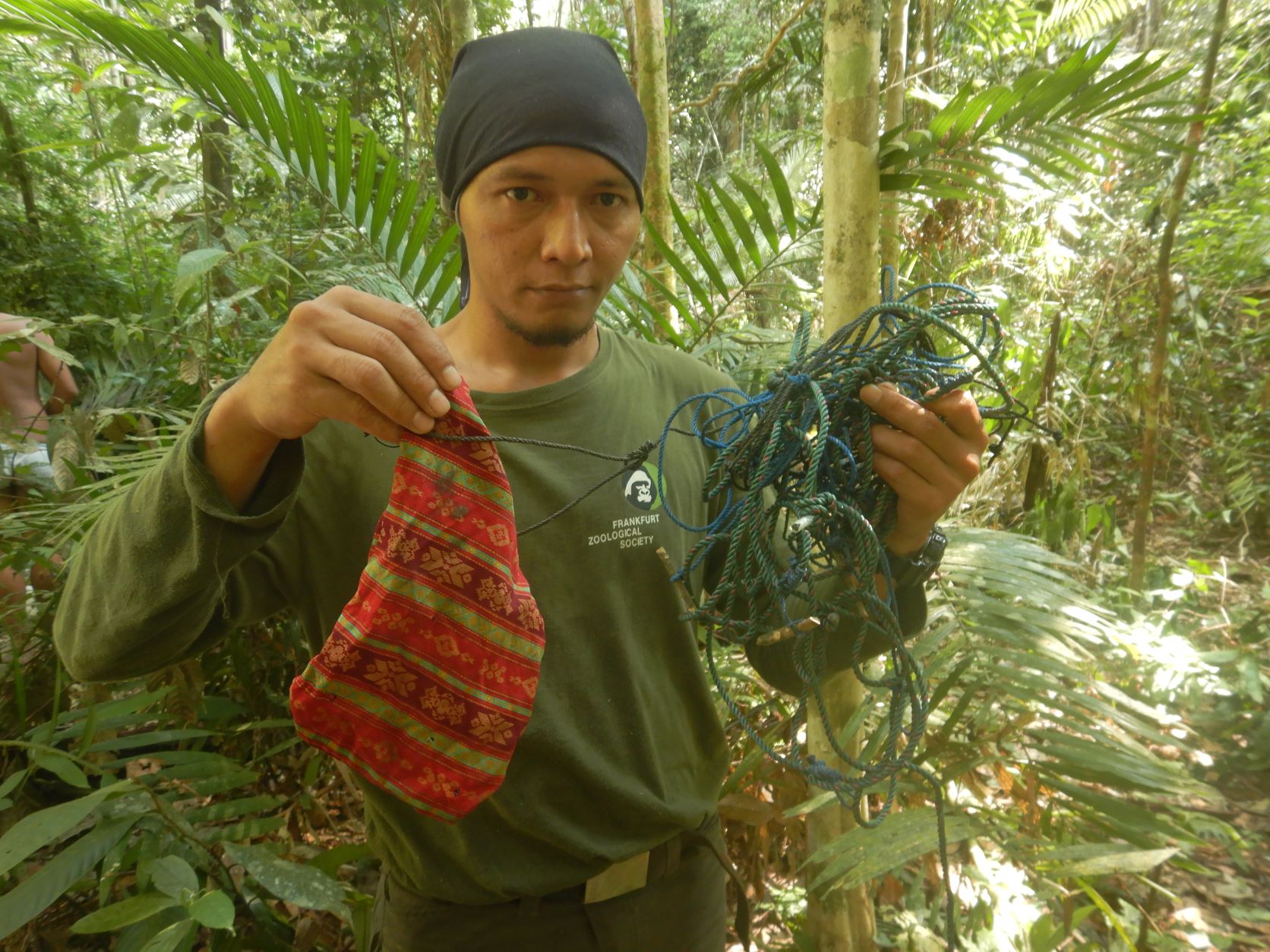
Above: A wildlife ranger with a number of snares as well as a small pouch to catch songbirds for sale in the wild bird markets
4pm
Our team and the BKSDA find a suitably flat and open location and for half an hour we carry her through the jungle in a transportation box to the site. The evacuation of Siti from the jungle is very difficult due to the hilly and rough terrain. Our team and the vets perform a medical examination and carry out urgent first aid. We estimate that Siti is a female about two years old, weighing 47 kilograms. She is 63 centimetres tall and two metres long. On closer examination of her wound, we estimate she had been entangled for about three days. She’s lucky to be alive. The part of the leg that was entangled is infected and inflamed, as well as being paralyzed from the injury.
5pm
The vets clean the wound, applying anaesthetic and antibiotics to the wound. They also take blood to test her overall health and collect faeces to carry out other health checks. The medical checks will help us treat the tiger for other diseases to help her recover more quickly.
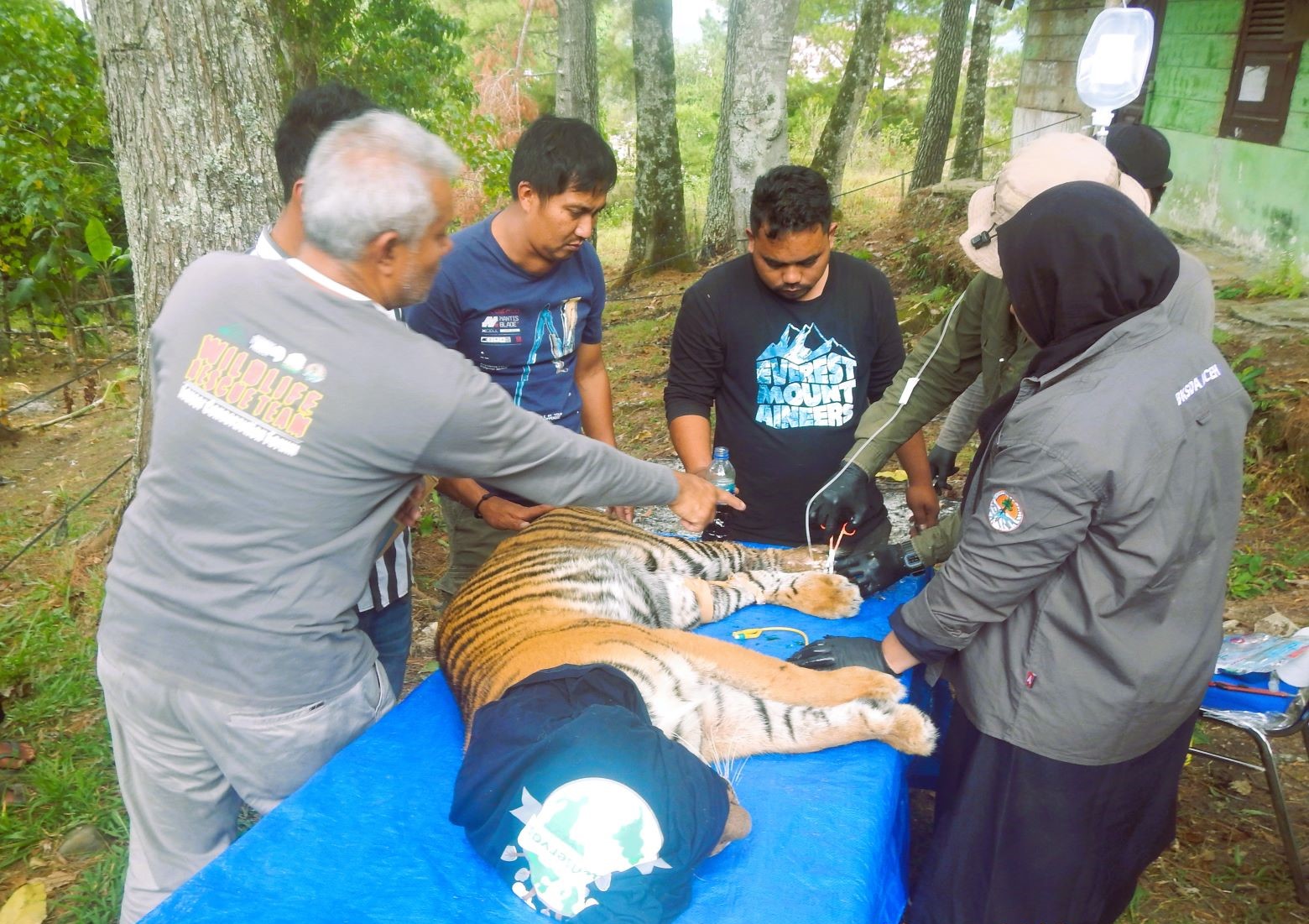
Above: The medical team carry out medical exams on the rescued tiger
Although she’s suffered extreme trauma, the vets believe Siti will be able to recover, although she will need further care for at least a month to recover and regain a full range of movement. Siti can’t return to freedom in the forest just yet; she’ll have to be transported to a rescue centre until she’s fit and healthy enough to be released to the forest. However, it’s clear the tiger would have died if we hadn’t rescued her from the snare.
6pm
Before Siti wakes up, we transfer her to the transportation box. Although we always prefer to leave tigers in the forest to recover, Siti would not survive in her current condition. There are always risks when we remove a tiger from the jungle, as they can become quite panicked by proximity with people. However, our rangers are skilled and very experienced, and we’ve returned a number of tigers back to the forest over the years.
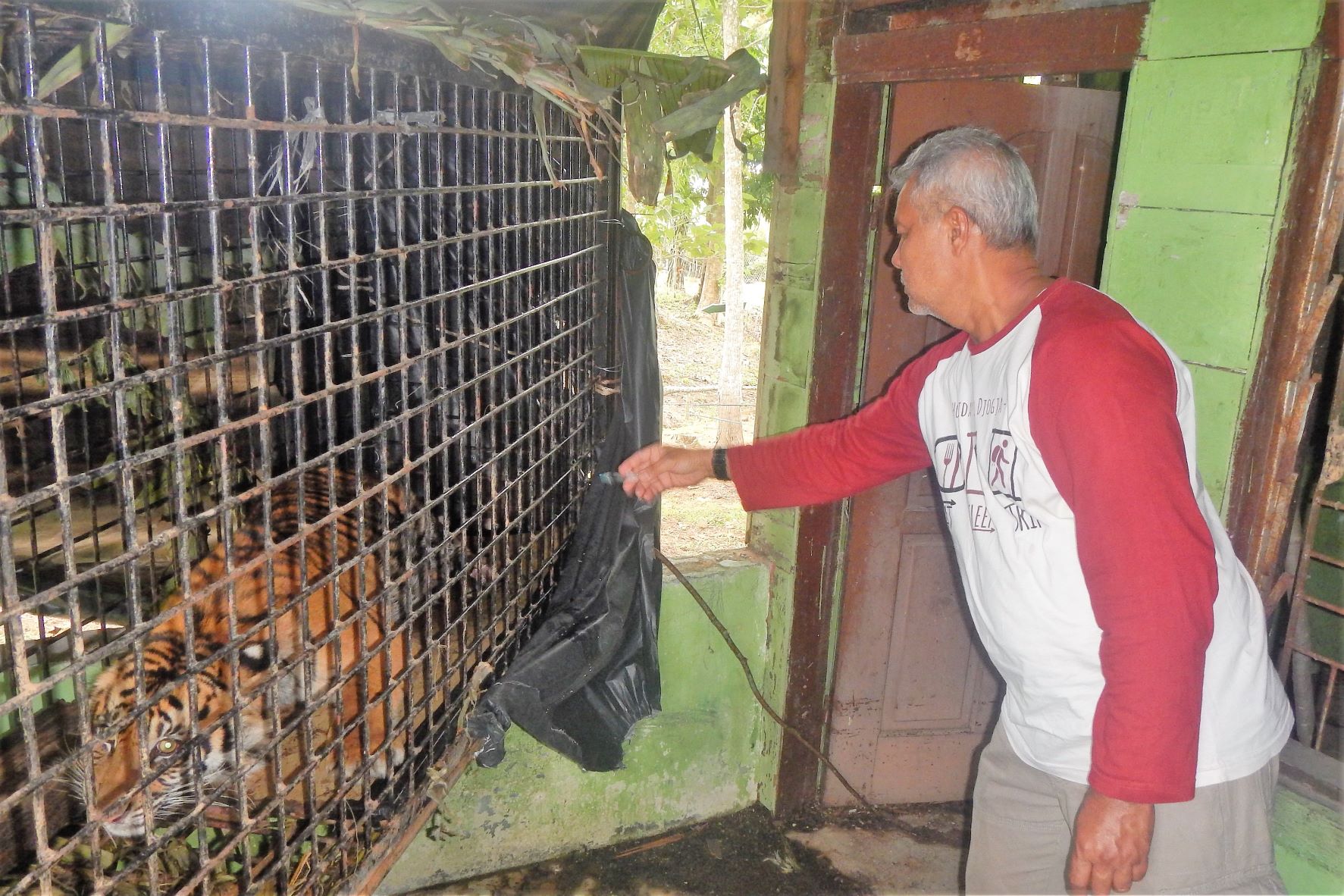
Above: The tiger waking up in the transportation box
7pm
Siti is now on her journey to a medical centre, but our ranger team will stay in the forest as we’re still on patrol for the rest of the week. Over dinner, we discuss the day. It’s been a hard day, traversing a river, racing through the midday heat to reach an ensnared tiger, and then the efforts of freeing her from the snare. But it’s been an incredibly satisfying and successful day. Tomorrow we will continue to remove more snares, patrol the forest, and educate and engage with more villagers and farmers so that together we can all work to protect and save Sumatran tigers.
We’ve saved a female tiger from certain death, and we hope that in the future she’ll have babies of her own, and help build her species up from the low numbers they are now. We’ve also learned that although some members of the nearby communities are still setting snares, many are concerned about the health and wellbeing of wildlife like tigers.
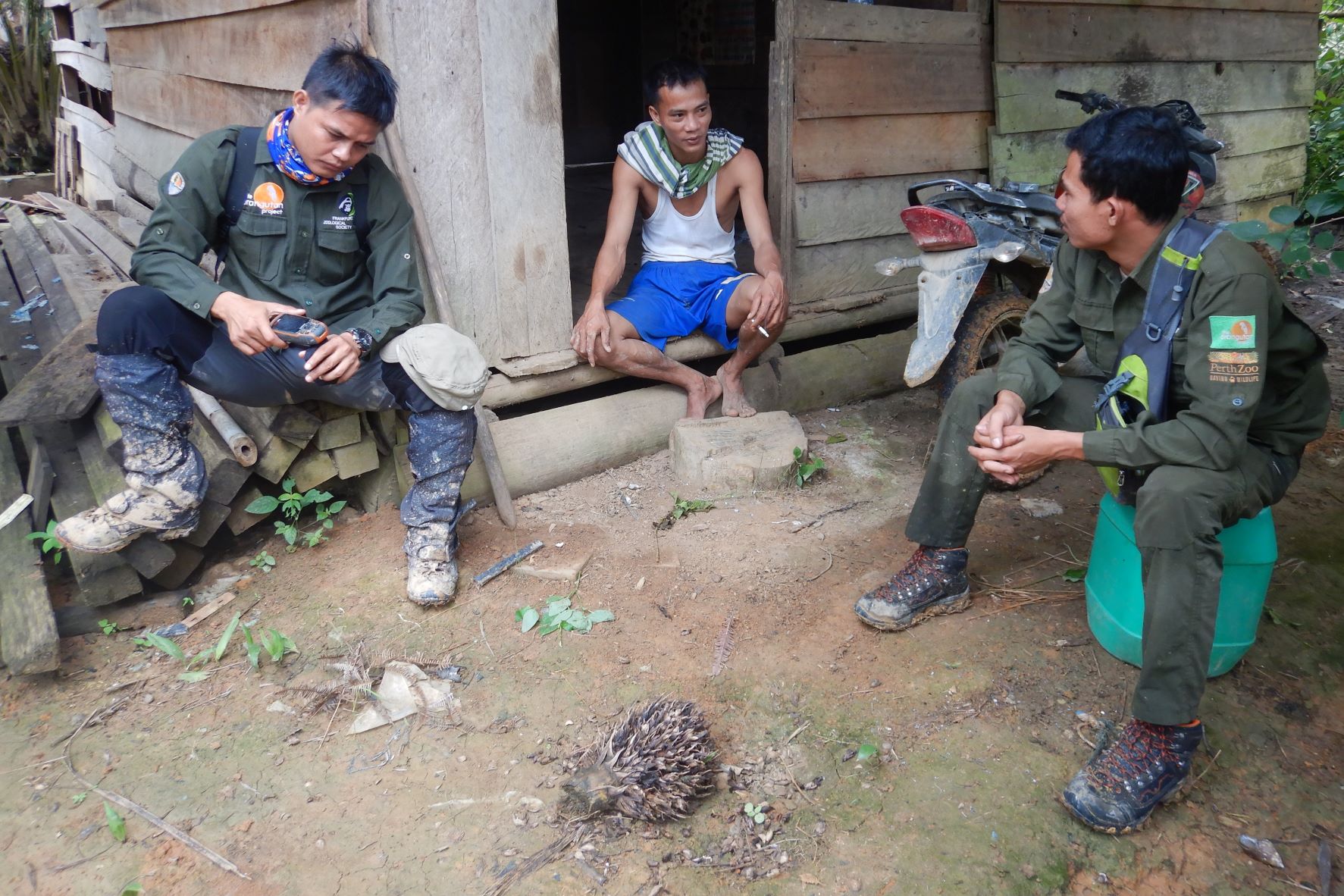
Above: Our rangers meeting with a local farmer to discuss the importance of wildlife conservation and sharing ways that we can support farmers to protect their livestock from tiger attacks
9pm
We go to sleep with the sounds of the forest all around us. The tinkling of the nearby river, the insects humming, and the trees sighing in the breeze.
Our work is never really finished, but we can go to sleep tonight knowing we’ve made a huge difference - and we’ll do it all again tomorrow. Every single tiger life saved is another chance for this precious species to survive beyond tomorrow.
To help our rangers save more tigers like Siti, donate to our appeal to equip a ranger.
